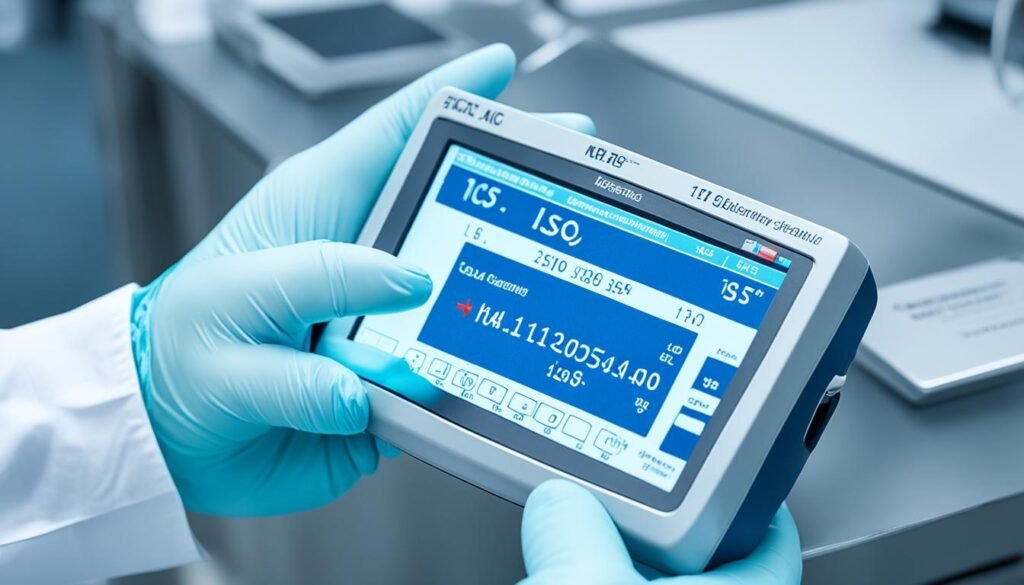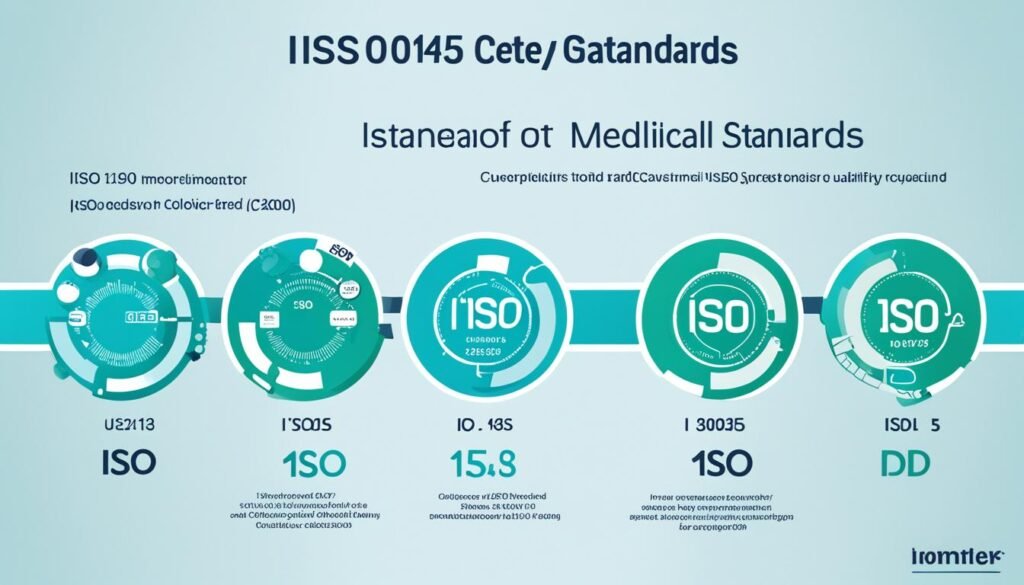In the fast-changing world of making medical devices, the push for quality has led to the creation of international standards. THY Precision ISO Standards for Medical Devices and ISO 13485 is now the top standard for managing quality in medical devices around the globe. But have you ever thought about how this standard started and what it means today for companies?
THY Precision leads in making precision medical devices. As the company deals with iso standards for medical devices and the iso 13485 meaning, it’s key to know the journey to this point.
Let’s dive into the story of how ISO standards for medical devices came about. We’ll also look at the real iso 13485 meaning that’s changing medical device making.
Key Takeaways
- ISO 13485 is the global standard for medical device quality management systems, established by the International Organization for Standardization (ISO).
- The current version, ISO 13485:2016, focuses on risk management and making decisions based on risk. It also brings more rules for companies in the supply chain.
- Getting ISO 13485 certification is key for medical device makers. It shows they meet safety standards and can enter markets like the European Economic Area.
- The growth of ISO standards aims to ensure top quality and safety in medical devices.
- Knowing the iso 13485 meaning and how it fits with your company’s iso standards for medical devices is vital for staying ahead in the market.
iso standards for medical devices,iso 13485 meaning
In the medical device world, quality and safety are key. That’s why iso standards for medical devices are so important, especially iso 13485. This standard is a must-have for companies making medical devices. It outlines how to manage quality in the design, production, and more.
iso 13485 aims to make sure medical devices meet customer needs and follow the rules. It builds on ISO 9001 but adds special rules for medical devices. Companies without this certification can’t sell their products to many customers.
“The ISO 13485 standard is a critical tool for companies in the medical device industry, ensuring quality, safety, and regulatory compliance across all aspects of their operations.”
Following iso 13485 helps companies show they care about quality. It makes them more competitive and builds trust with customers and regulators. This standard is a global guide for quality in medical devices, helping companies do better and protect patients.
Understanding the Importance of ISO 13485
In the medical device industry, following iso standards for medical devices is key. It’s vital to know the iso 13485 meaning. Companies need strong quality management and follow best practices from start to finish.
Regulatory Requirements
Rules for medical devices are getting tougher, focusing more on quality and safety. Companies must make sure their products meet strict FDA standards. Having iso 13485 certification is crucial to get into the market and keep customers’ trust.
Quality Management System
The medical device quality management system from iso 13485 helps companies manage quality well. It outlines the structure, processes, and roles needed for quality in making medical devices.
| Key Elements of ISO 13485 | Benefits |
|---|---|
| Risk Management | Proactively identifies and mitigates potential risks |
| Design Controls | Ensures product design and development meet regulatory and customer requirements |
| Supplier Management | Ensures consistent quality of materials and services from third-party providers |
Following iso 13485 helps medical device makers work better, make better products, and follow the rules. This leads to success in a tough market.

“Adhering to ISO 13485 standards is not just a regulatory requirement, but a strategic investment in the long-term sustainability and growth of your medical device business.”
Tracing the Evolution of ISO Standards
The iso standards for medical devices have changed a lot over time. The iso 13485 meaning has grown to fit the medical device industry’s needs. This ensures that companies keep up with quality and safety standards.
The first iso 13485 standard came out in 1996. It gave a detailed plan for quality management in the medical device field. Since then, the standard has been updated twice. The latest version, iso 13485:2016, started in March 2016.
The iso 13485:2016 version meets the industry’s new needs. It includes changes in technology, rules, and best practices. A big change is the focus on risk management and risk-based decision making. This helps companies handle risks better throughout the product’s life.
The new standard also looks at the growing regulatory requirements for medical device companies. It makes sure quality management systems keep up with the latest rules.
The changes in the iso 13485 standard show the medical device industry’s drive for betterment. By keeping up with changes, the iso 13485 certification is key. It helps make sure the medical device quality management system is top-notch.

“The iso 13485 meaning has evolved to ensure that organizations in the medical device industry maintain the highest levels of quality and safety, adapting to the changing needs of the industry and regulatory landscape.”
Key Components of ISO 13485
The medical device industry is always changing. That’s why a strong quality management system, like ISO 13485, is vital. This standard sets out key parts that make sure medical devices are safe and work well.
Risk Management
ISO 13485 says it’s key to have a solid risk management process. Companies need to look at risks and find ways to lessen them. This means spotting dangers, checking risks, and taking steps to reduce risks in making and using medical devices.
Design Controls
Planning for product realization is a must under ISO 13485. Companies need to set clear quality goals and know what processes and people they need. They must plan the design, check it, test it, and make sure it meets all the rules.
Supplier Management
Managing suppliers well is also vital, as ISO 13485 says. Companies must have clear steps for checking and making sure products, including those from suppliers, are good quality. This keeps all parts of the medical device up to standard.
| ISO 13485 Key Component | Description |
|---|---|
| Risk Management | Organizations must apply a risk-based approach to the control of the appropriate processes needed for their medical device quality management system. |
| Design Controls | Product realization planning requires defining the quality requirements, necessary processes, and infrastructure and employee qualifications needed to support the device’s development. |
| Supplier Management | Organizations must outline their processes for the verification, validation, measurement, monitoring, handling, inspection, storage, distribution, and traceability of products, including those obtained from suppliers. |
“Effective implementation of these key components of ISO 13485 is essential for medical device companies to ensure the quality, safety, and compliance of their products.”
Conclusion
The evolution of iso standards for medical devices has been key. It has shaped the quality and safety of medical products and services. THY Precision and others now see iso 13485 as vital for showing they care about safety and customer happiness.
Following iso 13485 helps THY Precision and others manage their work well. They focus on design, risk management, and keeping suppliers in check. This makes sure their products are safe and high-quality. It also builds trust with customers, healthcare providers, and regulators.
As iso standards for medical devices keep getting better, THY Precision and others must keep up. But by sticking to iso 13485, they can stay ahead. This keeps them as trusted partners in the medical device world.

